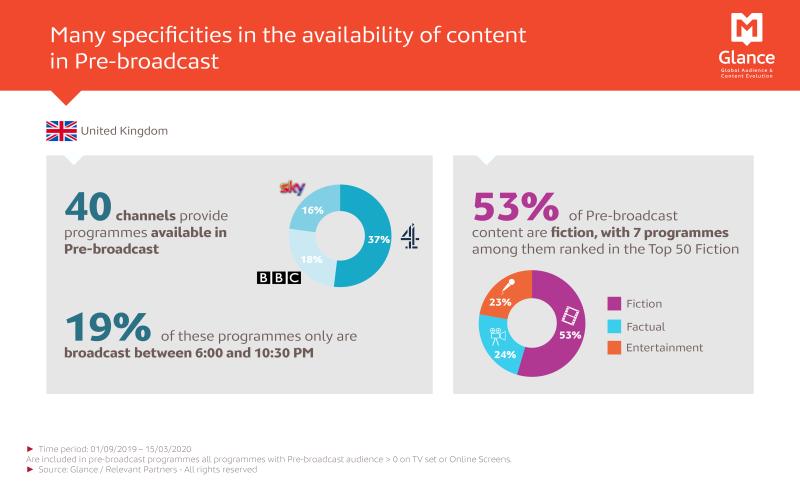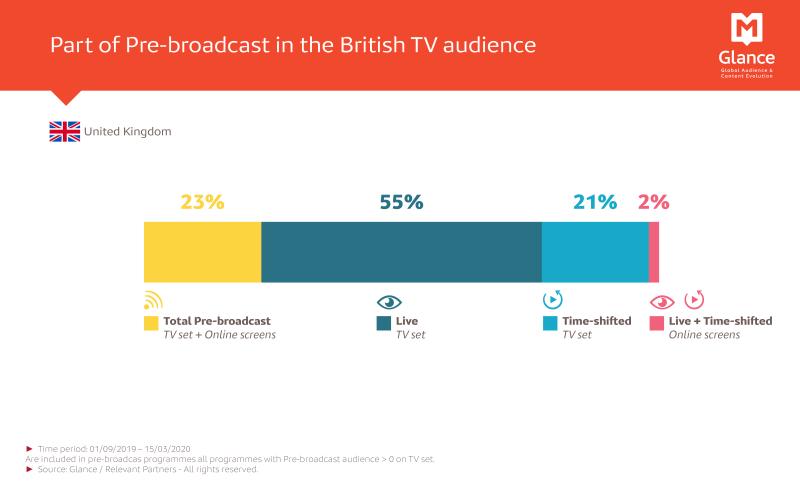- Accueil
- Actualités
- Pre-broadcast : quelles spécificités de visionnage et contribution à l'audience des programmes ?
Pre-broadcast : quelles spécificités de visionnage et contribution à l'audience des programmes ?
Over the past few years, the way to consume TV hasn’t stopped evolving. In addition to the mainstream time-shifted viewing, another non-linear alternative is also growing in the shape of pre-broadcast viewing, which allows to watch a specific TV programme online before its live broadcast. Currently, only the UK can measure pre-broadcast on a programme level. We will then focus on this country, to understand the impact of this new way of consumption on British programmes.
Between September 2019 and March 2020, 8,068 episodes recorded pre-broadcast audience on the TV set or Online screens. They were provided by 40 channels (out of more than 300 channels measured in the country). If we take a closer look at these channels, we can see that it is first and foremost Channel 4, BBC and SKY group channels which together account for 72% of the programmes broadcast. So public broadcasters on one hand and a pay TV on the other hand are not surprisingly the ones which are now pushing this new way of consuming content.
Nevertheless, no channel is willing to place their blockbusters in pre-broascast viewing. Most of these programmes are indeed daytime or late-night programmes since only 19% are broadcast Live between 6pm and 10.30 pm in the UK.
This point is confirmed by the fact that among the top 50 fiction programmes, only 7 were available in preview. And yet, more than 50% of the pre-broadcast episodes are Fiction (23% Factual and 22% Entertainment).

In the light of these conclusions, we can easily understand that the weight of pre-broadcast viewing in the overall British TV audience is minor. But if we focus on programmes which had at least pre-broadcast audience on the TV set, this new way of consumption accounts for 21% of the audience in the UK. This is stronger than British Time-shifted viewing, which is one of the most developed in the world.

Calcul d’intervalle de confiance à 95%
Attention : ne s'applique qu'à une proportion. Le Taux Moyen est une moyenne de proportions
et la Part d'audience un rapport de proportions.
Cet outil est donné à titre indicatif. Il ne saurait
pouvoir s'appliquer sans autres précautions à des fins professionnelles.
Test de significativité des écarts entre deux proportions
Permet d'évaluer si la différence entre 2 proportions est significative au seuil de 95%
Attention : ne s'applique qu'à une proportion. Le Taux Moyen est une moyenne de proportions
et la Part d'audience un rapport de proportions.
Cet outil est donné à titre indicatif. Il ne saurait
pouvoir s'appliquer sans autres précautions à des fins professionnelles.
des médias
édition
définitions
